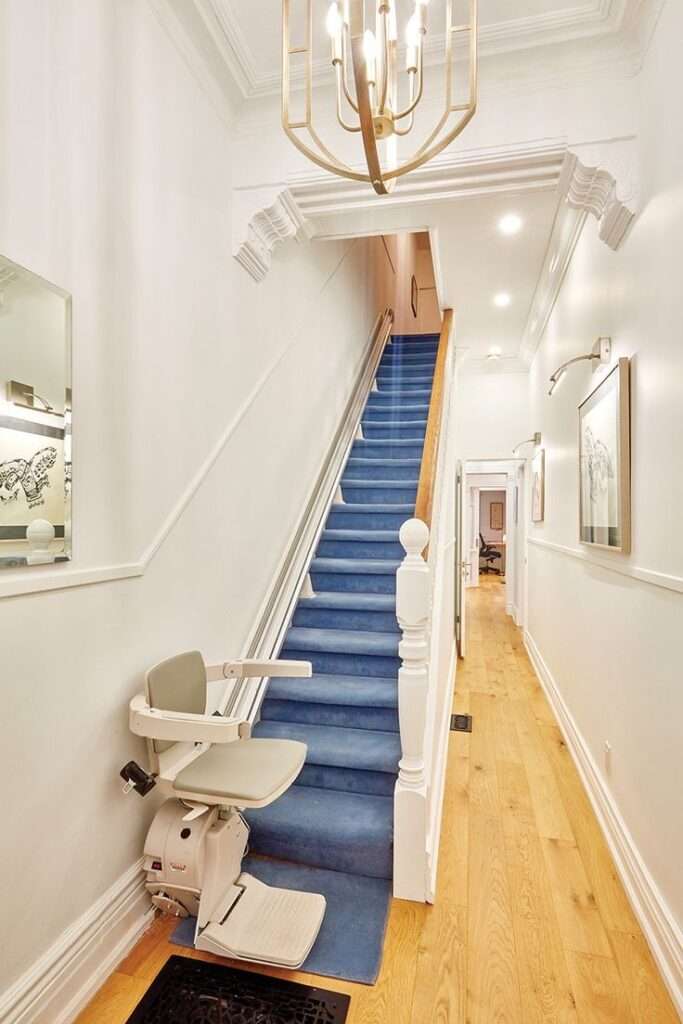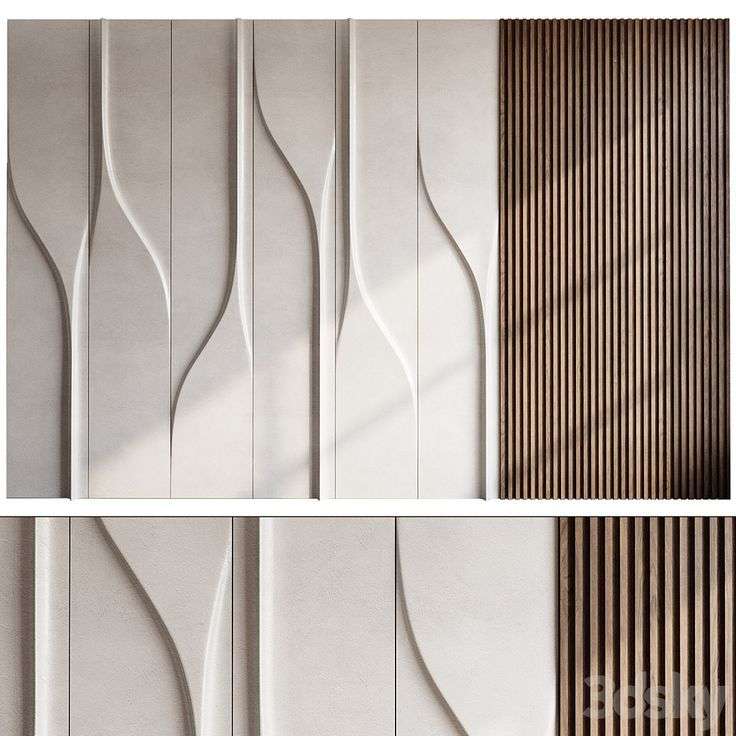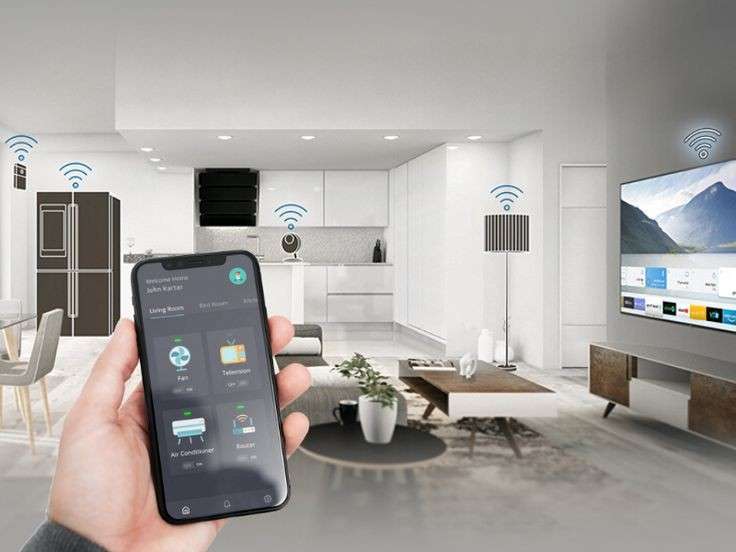As we age, the way we interact with our living spaces evolves. At Scale & Structure, we believe that your home should not only reflect your personal style but also accommodate your changing needs as you grow older. Designing for aging in place means creating spaces that are functional, safe, and accessible without compromising on style. It’s about anticipating future needs and integrating smart design solutions to make everyday living easier and more enjoyable.
In this blog post, we’ll explore how to design your home for aging in place, focusing on stylish yet accessible solutions that make life easier while ensuring your home remains beautiful and inviting.

1. What is Aging in Place?
Aging in place refers to the ability to live in one’s own home independently and comfortably, regardless of age or ability level. It means making modifications or additions to your home that support safety, mobility, and ease of use as you grow older. The goal is to avoid the need to move to assisted living or other facilities by ensuring that your home supports your physical, mental, and emotional well-being for years to come.
At Scale & Structure, we specialize in creating homes that prioritize both style and accessibility, helping clients feel comfortable and independent in their own spaces, no matter their age.
2. Why Aging in Place Matters
The desire to stay in one’s own home as long as possible is universal. According to studies, the majority of older adults prefer to live in their own homes rather than move to a care facility. Designing for aging in place helps achieve this goal by providing a living environment that adapts to physical changes over time.
Moreover, aging in place doesn’t just cater to those in their later years. Planning for accessible design from the start can help individuals at any age feel more comfortable, whether recovering from an injury, managing a chronic condition, or simply preparing for the future.
By incorporating accessible features into your home, you can create a space that promotes independence, enhances safety, and reflects your unique style.
3. Key Principles of Aging-in-Place Design
When designing for aging in place, there are several key principles to keep in mind:
a. Universal Design
Universal design is about creating spaces that are accessible to everyone, regardless of age or ability. This design philosophy ensures that the space accommodates people of all abilities without needing significant modifications. For example, consider wider doorways to accommodate walkers or wheelchairs and non-slip surfaces to prevent falls.
At Scale & Structure, we incorporate universal design into every project, ensuring that your home is adaptable to your future needs.
b. Functionality with Style
Aging-in-place design doesn’t mean sacrificing beauty for functionality. In fact, stylish and functional designs go hand in hand. There are countless ways to make your home more accessible while maintaining a modern, chic aesthetic.
For example, instead of installing clunky grab bars in bathrooms, opt for elegant, designer safety rails that blend seamlessly with the room’s décor. Or, choose stylish but ergonomic furniture that supports comfortable seating and easy transitions.
The goal is to create a living space that feels luxurious, comforting, and, most importantly, livable.
c. Safety and Comfort
Safety is a priority in aging-in-place design, especially as mobility becomes more of a concern. It’s important to integrate features that promote ease of movement while reducing the risk of falls and accidents. These features should not only be practical but also comfortable and visually pleasing.
d. Smart Technology Integration
Technology can be a powerful ally when designing for aging in place. From automated lighting and voice-activated assistants to smart thermostats and security systems, incorporating technology into your home can enhance convenience and safety without compromising design. These technologies can make tasks easier to complete, improve home security, and even monitor health.
4. Stylish and Accessible Design Solutions for Aging in Place
Here are some accessible design solutions that not only prioritize functionality but also enhance the style of your home:
a. Bathroom Design: Accessibility with Elegance
The bathroom is often one of the most important areas to consider when designing for aging in place. By making a few key changes, you can create a safe, accessible, and stylish bathroom that caters to your needs.
- Walk-In Showers: Traditional bathtubs can become difficult to navigate as we age, so replacing them with spacious, walk-in showers is a practical solution. Install a built-in bench or folding seat for added comfort, and consider a barrier-free shower design for easy access.
- Non-Slip Floors: Slip-resistant flooring is essential for preventing falls. Look for stylish, textured tiles or vinyl flooring that provides traction while enhancing the room’s aesthetic.
- Floating Vanities and Raised Toilets: Floating vanities and raised toilets can make it easier to use the bathroom, providing better accessibility and comfort. Choose sleek, contemporary designs to maintain a modern, minimalist look.
- Grab Bars with Style: Modern grab bars are now available in sleek designs that complement your bathroom’s décor. Choose bars with finishes like matte black, chrome, or brushed nickel to blend seamlessly with the rest of your bathroom fixtures.
b. Kitchen Design: Safe and Functional Workspaces
The kitchen is the heart of the home, and creating an accessible and stylish cooking space can help promote independence. Focus on designing a kitchen that minimizes effort and reduces strain on the body while keeping it functional and beautiful.
- Lowered Countertops: Countertops that are slightly lower than standard height can make food prep and cooking more comfortable for individuals with mobility challenges.
- Pull-Out Shelving: Pull-out shelves and drawers can make it easier to access kitchen items without bending or reaching. Choose smooth, easy-glide mechanisms to ensure accessibility.
- Touchless Faucets: Touchless faucets help reduce the need to bend down or twist knobs, making them a practical and hygienic choice for any kitchen.
- Induction Cooktops: Induction cooktops are easier to clean and offer precise temperature control, making cooking safer and more efficient.
c. Lighting: Enhancing Visibility and Ambiance
Adequate lighting is essential for creating a safe and comfortable environment. As vision may change with age, it’s important to use lighting to enhance visibility while also setting a relaxing, welcoming ambiance.
- Layered Lighting: Incorporate a mix of ambient, task, and accent lighting to ensure a well-lit space for different activities. Install dimmers to adjust lighting levels based on your needs throughout the day.
- Motion Sensor Lights: Motion-activated lights in hallways, bathrooms, or staircases can improve safety by illuminating spaces as you move through them without needing to touch a switch.
- Smart Lighting: Consider integrating smart lighting systems that allow you to control the lights remotely or with voice commands, making it easier to adjust lighting in hard-to-reach places.
d. Living Areas: Comfortable and Adaptable Spaces
The living room and other common areas are where you’ll spend a lot of time, so it’s important to design them for both comfort and accessibility.
- Ergonomic Furniture: Choose furniture with the right level of support for comfortable seating. Reclining chairs or sofas with adjustable features, like powered footrests or lumbar support, can provide extra comfort and ease of use.
- Easy-to-Navigate Layouts: Avoid clutter and arrange furniture in a way that allows for easy movement and accessibility. Consider open spaces with minimal obstacles to promote freedom of movement.
- Stylish Yet Accessible Storage: Incorporate stylish, accessible storage solutions like low-shelf cabinets, under-bed storage, or pull-out drawers to minimize bending or stretching. Choose storage solutions that are aesthetically pleasing while still offering practical functionality.
e. Smart Home Technology: Improving Daily Life
Smart home devices can make everyday tasks easier and safer, and they can be integrated seamlessly into your design.
- Voice-Controlled Assistants: Devices like Amazon Alexa or Google Assistant can help with a variety of tasks, from adjusting the thermostat to controlling the lights or playing music, all without needing to get up.
- Smart Thermostats: A smart thermostat that learns your preferences and adjusts the temperature for comfort can help reduce energy consumption while making your home more comfortable.
- Home Security: Install smart cameras, doorbell systems, and automated locks to enhance security. These systems allow for remote monitoring and easy access control, providing peace of mind.
5. Conclusion: Designing for Aging in Place with Style and Purpose
Designing for aging in place is about creating spaces that are functional, safe, and beautiful, no matter your age. At Scale & Structure, we specialize in designing homes that not only meet the needs of today but also anticipate the challenges of tomorrow. By incorporating stylish yet accessible solutions, we can help you create a space that adapts to your lifestyle and enhances your comfort, all while reflecting your unique design taste.
Ready to design a home that supports your future? Contact Scale & Structure today, and let’s create a space where you can age with grace, comfort, and style.



